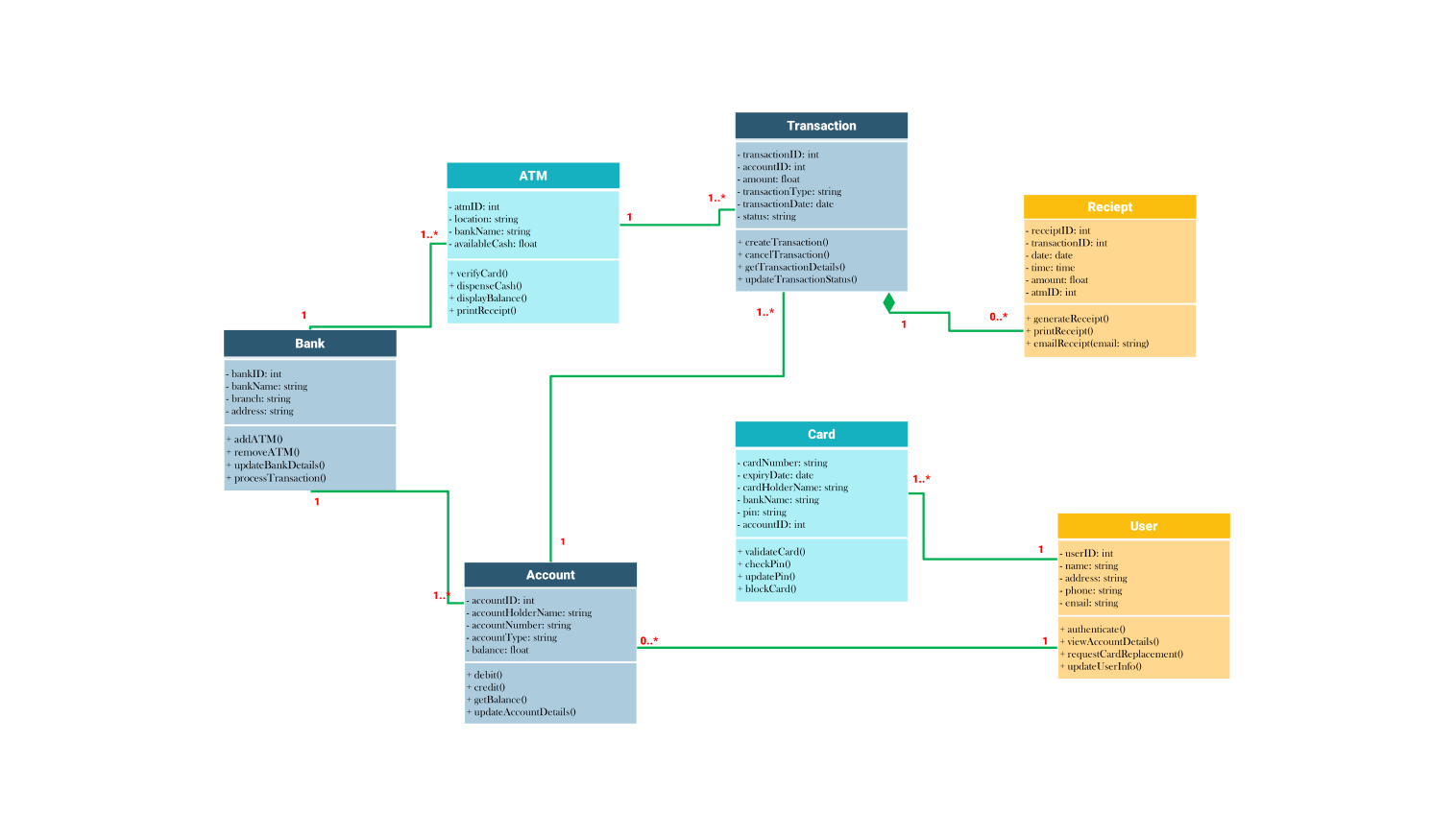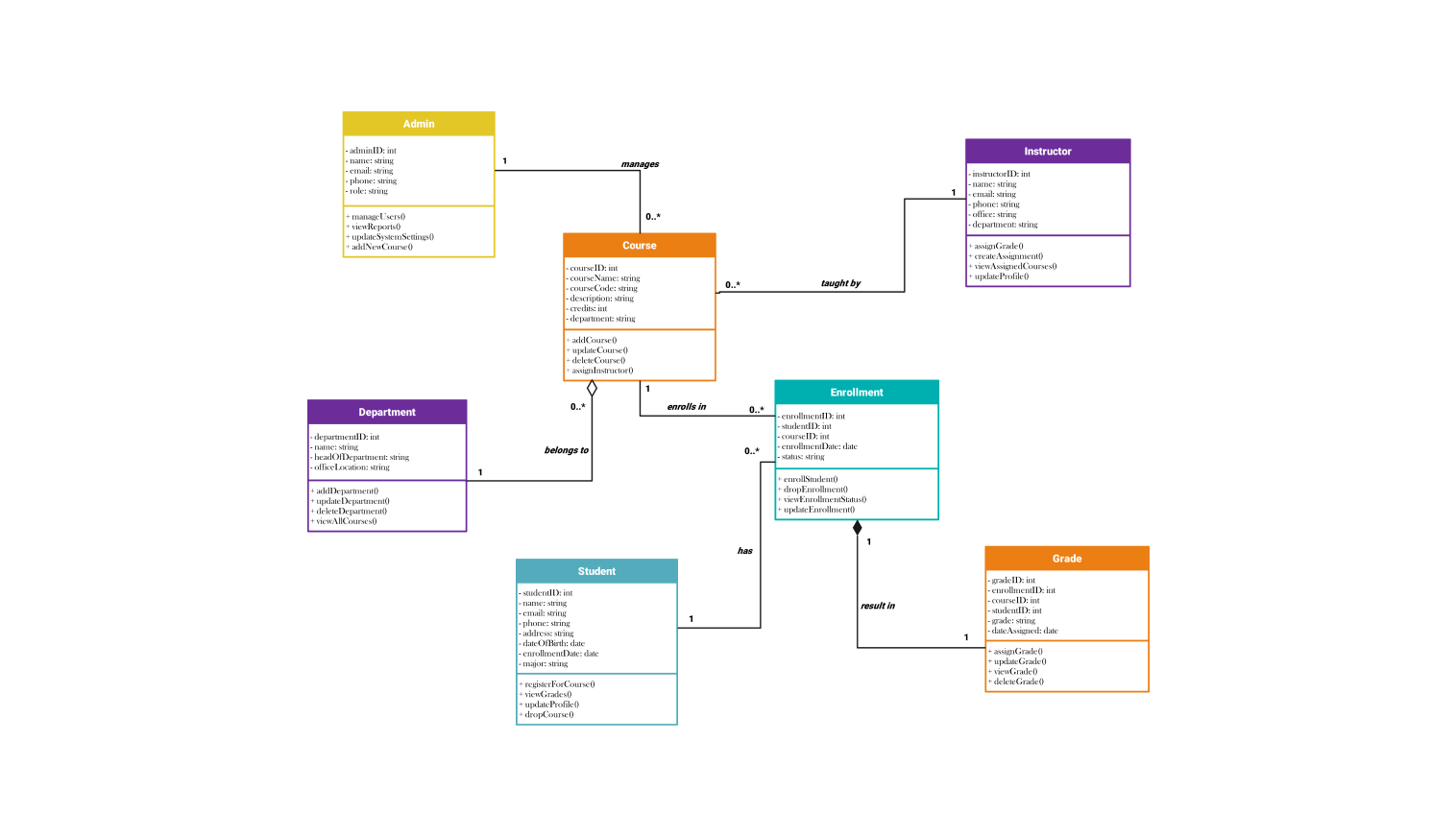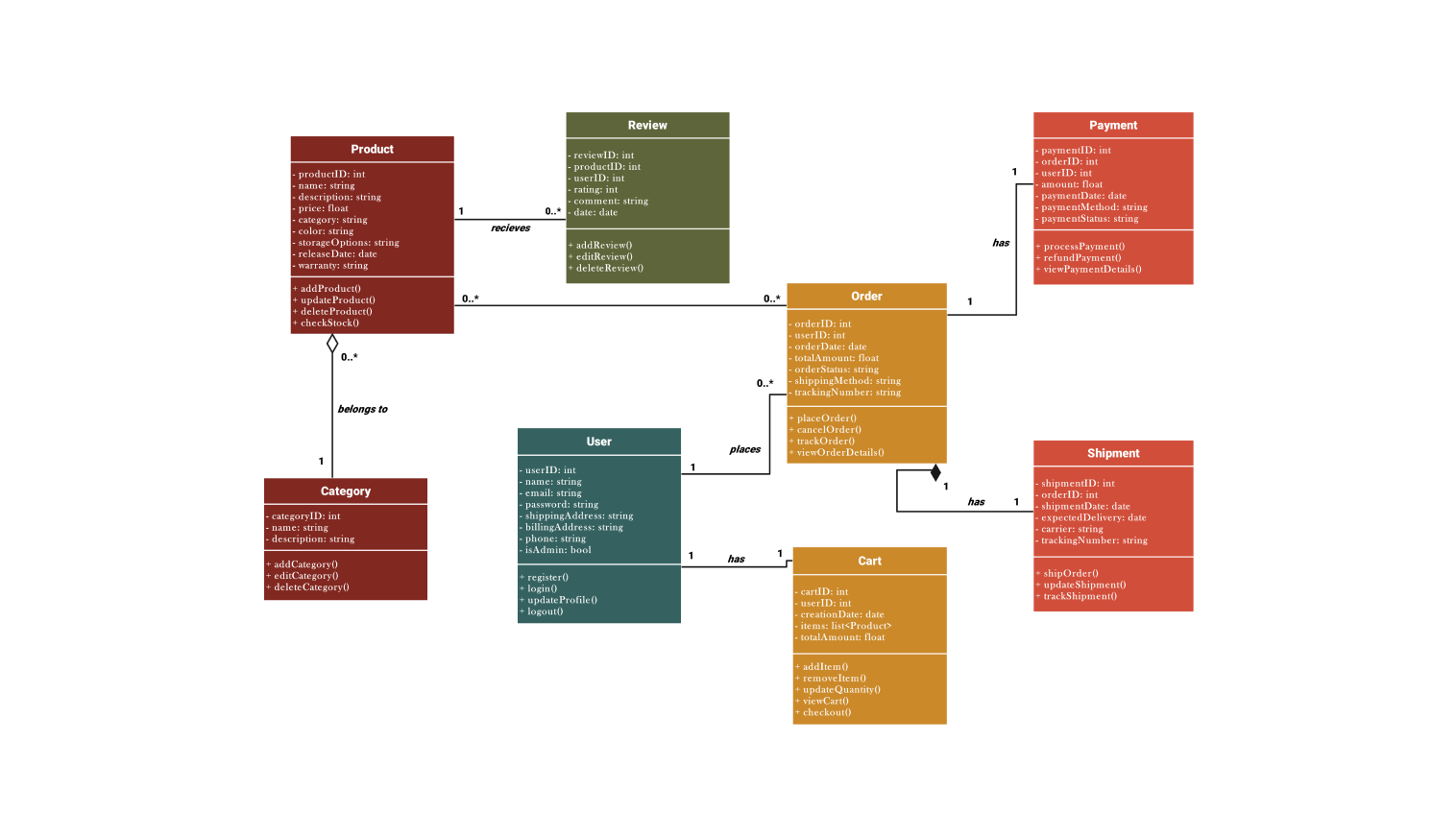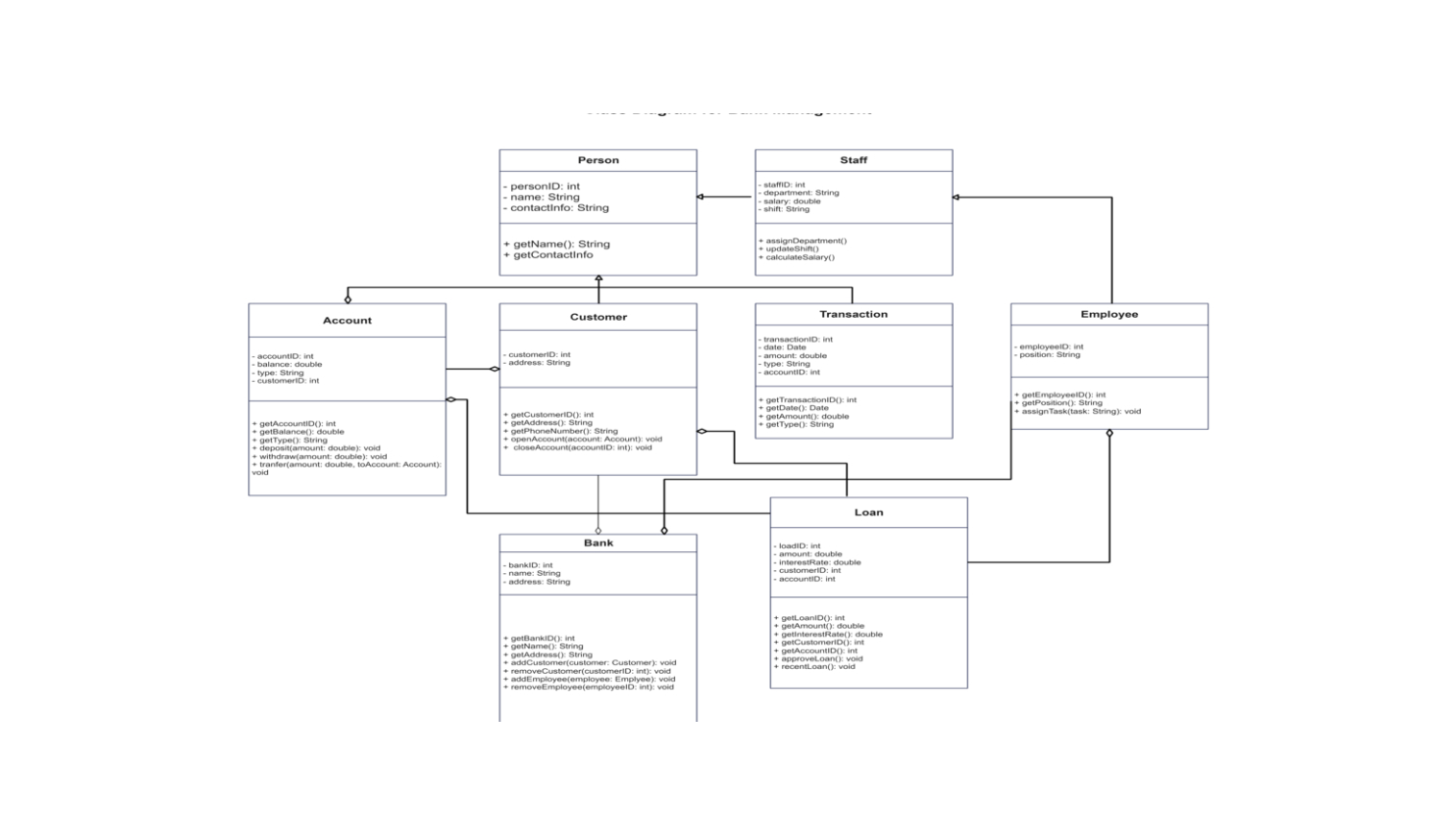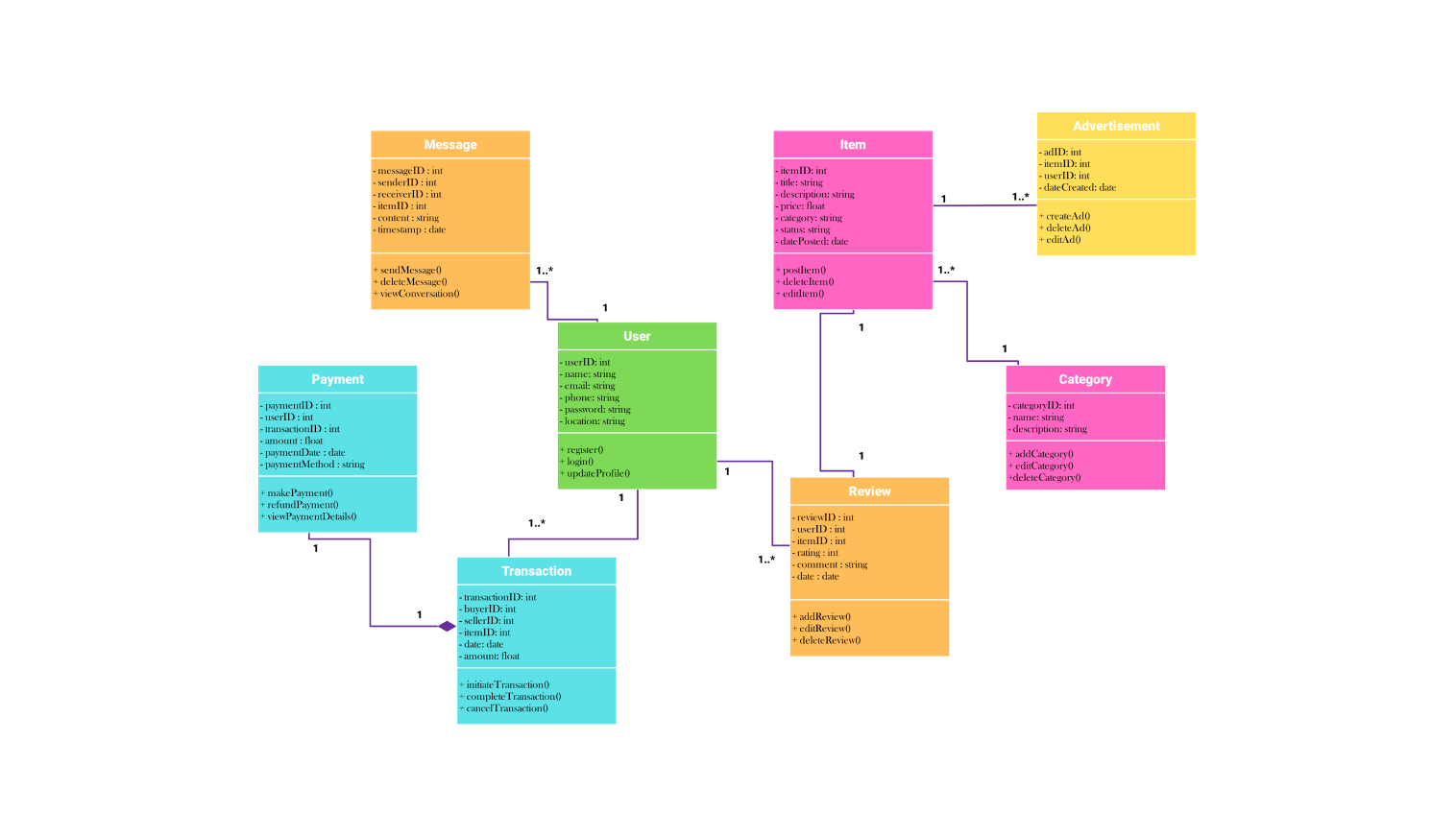- All templates
- Class diagram templates
- Class diagram real state
About this class diagram for real state
This class diagram portrays a real estate management system, including major classes and their interactions with others inside the system. The classes involved in this diagram include client, agent, transaction, property, and agency. All of these classes contribute to the system by providing unique functionalities.
The class that deals with financial transaction-related processes is the transaction class. It achieves this by managing transactions through processing and keeping a record of transaction details. It records the critical details about a transaction such as the transaction's date, amount, and unique ID.
The client class represents the people looking for property, keeps their contact information, and maintains a list of properties they find suitable for themselves. Clients can therefore show interest in different properties and get contact information.
This class has a one-to-many relationship with the transaction class, which means that a client may be involved in several transactions.
The agent class contains some personal pieces of information about real estate agents, such as their contact information. This class also has ways to look after how these real estate agents manage property listings.
Each agent can list and delete properties, and they have a one-to-many association with the property class. This means one agent can handle several properties.
The property class, as the name suggests, holds information about each property, including its address, price, kind, availability, and listing date. This class plays a key role in the development of a real state system.
This is because it allows easy communication among agents and customers. It includes methods for calculating the price and getting details about a specific property. It aids in connecting the agent and client through property transactions.
The agency class is another important class that represents real estate agencies and contains information such as their name and address. Agencies can recruit and replace agents.
This factor highlights the existence of a composition relationship in which the agency owns the agents. This class guarantees that agents are properly managed, which improves the system's overall functionality.
Summing up, the diagram through its use of relationships and arrows, shows interactions that occur inside a real estate system. It highlights the flow of information and actions throughout the system, ensuring that everything runs smoothly, from listing properties to completing transactions.
Related templates
Get started with EdrawMax today
Create 210 types of diagrams online for free.
Draw a diagram free Draw a diagram free Draw a diagram free Draw a diagram free Draw a diagram free
